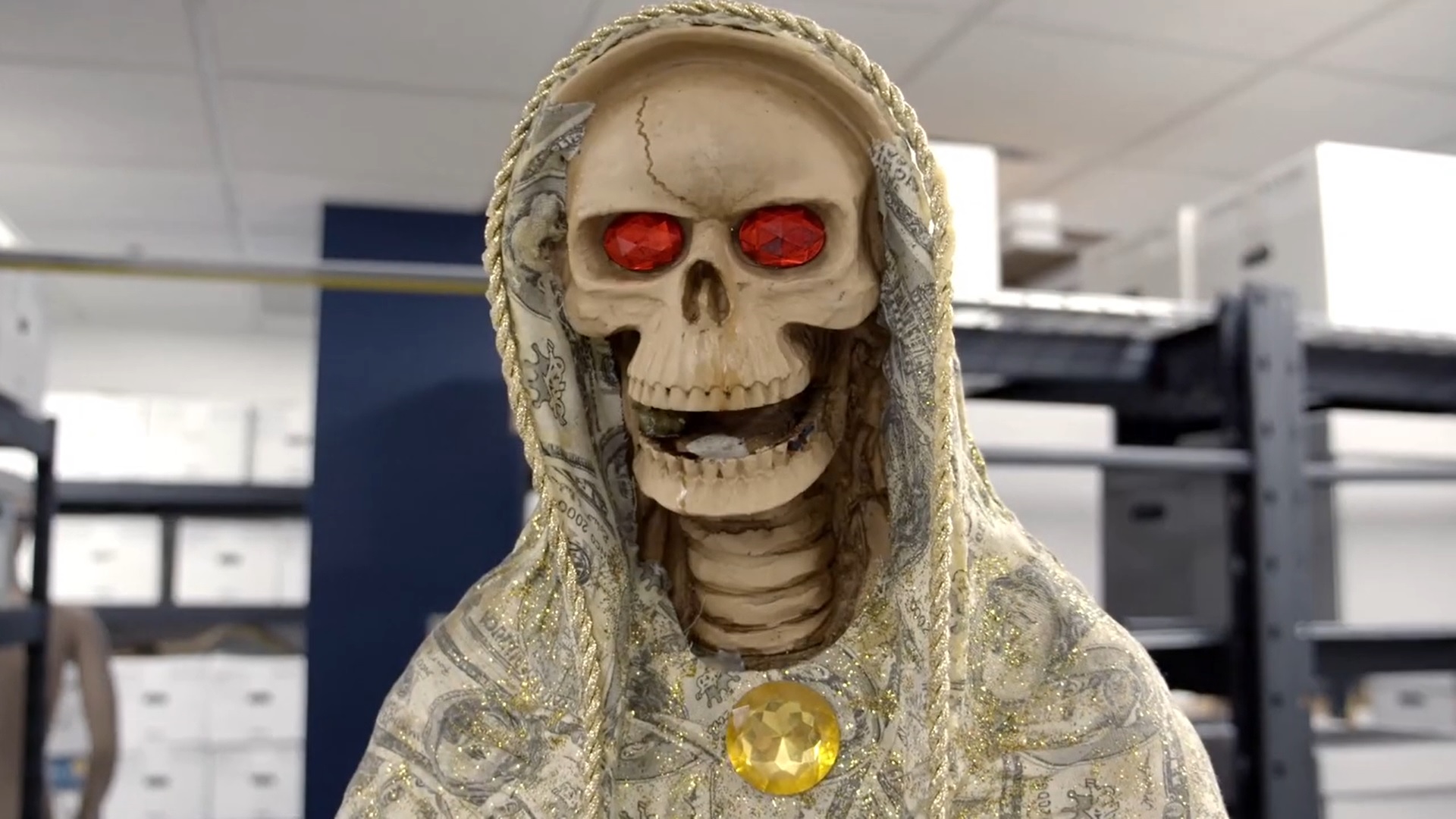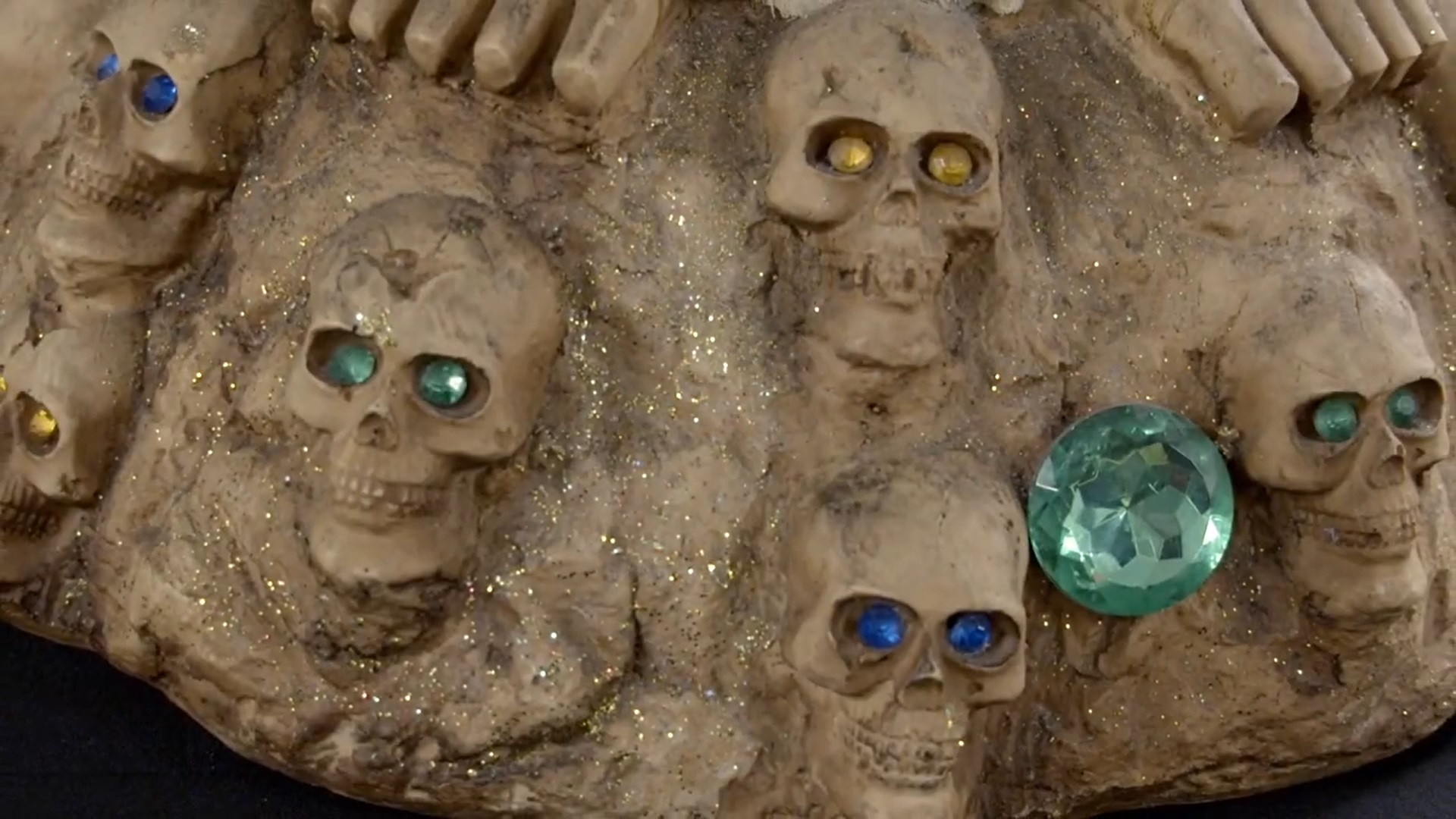
A statue of Santa Muerte, a figure adored in the criminal world, was confiscated in actions against drug trafficking by the Drug Control Administration (DEA) and is now part of the museum of dependency, where its symbolism is understood with wealth, as well as in terror.
According to the agency's official report, this golden-cloaked sculpture was seized in 2011 from two women carrying more than 700 grams of methamphetamine, on their way from Arizona to Minnesota. The color chosen to decorate it represents economic power, success and prosperity.
When DEA agents hit Santa Muerte when they intercepted the car, the drivers of the vehicle placed her in the back seat, fastened with her seat belt. He was missing a hand, revealing a hollow interior. He wore a sickle with a golden handle and a blade encrusted with fake jewels.

According to the DEA, Santa Muerte is a recurring icon among the Sinaloa Cartel, Juarez Cartel and the Gulf Cartel. Of these transnational crime groups, only the first of them remains in force in half of Mexico and reach in the five continents of the planet.
The one seized in 2011 is just over a meter high (107.5 cm), 30 centimeters long and 40 cm wide, according to the DEA file. While most of his followers are based in Mexico, in the United States he also has some faithful.
The intimidating figure, says the anti-drug agency, is standing on a bed of skulls, wrapped in a robe with fake $100 bills and glitter. A pair of red gems form his ominous reds, while in his right hand he holds a globe.

Although it is not determined why sculpture needed a limb, both the historian and the technician of the DEA museum pointed out that, sometimes, narcotics are hidden inside the figures.
However, its characteristic feature is that drug traffickers always seek to intimidate others with the powerful and deadly images of the so-called white girl. It is not recognized by church authorities and may be controversial, but that does not mean that believers pray to it, build altars or perform rituals on its behalf.

Mexico is the second nation in the world by number of Catholics after Brazil with more than 97.8 million people, according to the 2020 census of the National Institute of Statistics and Geography (Inegi), which highlighted that 77.7% profess this religion.
However, in some states syncretism prevails, understood as the mixture of pre-Hispanic beliefs with customs imposed with Spanish evangelization.
An example of this can be translated in Santa Muerte, since before the arrival of Europeans bloody rites or sacrifices were part of the worldview, and the understanding of the so-called underworld or the saints was different from the dualistic meanings of good and evil, taught in the religion of Catholicism.
KEEP READING:
Últimas Noticias
Debanhi Escobar: they secured the motel where she was found lifeless in a cistern
Members of the Specialized Prosecutor's Office in Nuevo León secured the Nueva Castilla Motel as part of the investigations into the case

The oldest person in the world died at the age of 119
Kane Tanaka lived in Japan. She was born six months earlier than George Orwell, the same year that the Wright brothers first flew, and Marie Curie became the first woman to win a Nobel Prize

Macabre find in CDMX: they left a body bagged and tied in a taxi
The body was left in the back seats of the car. It was covered with black bags and tied with industrial tape
The eagles of America will face Manchester City in a duel of legends. Here are the details
The top Mexican football champion will play a match with Pep Guardiola's squad in the Lone Star Cup

Why is it good to bring dogs out to know the world when they are puppies
A so-called protection against the spread of diseases threatens the integral development of dogs




